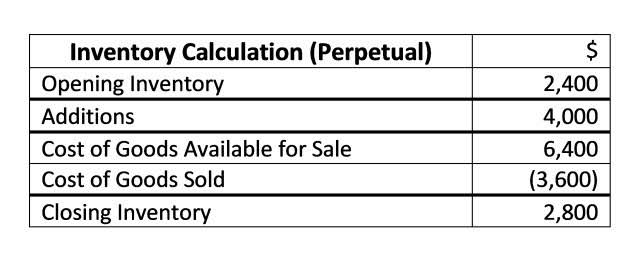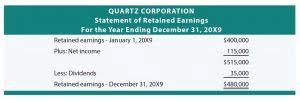
Following these rules isn’t just about staying on the right side of the taxation office – it also helps give an accurate picture of how your business is really doing. A liability is a present obligation of an entity arising from past transactions or events, the settlement of which is expected to result in an outflow of resources embodying economic benefits in the future. For an obligation to be classified as a liability under GAAP, it must be a present obligation, unavoidable, and result from a past event. Baremetrics integrates directly with your payment processor, so information about your customers is automatically piped into the Baremetrics dashboards.
What Is Unearned Revenue? Definition & Examples
Australian businesses have a smart framework for handling unearned revenue through AASB 15 (Australian Accounting Standards Board). This standard helps you track your financial obligations accurately, ensuring you’re reporting exactly what you’ve earned. Understand why this critical concept is a liability and its accounting implications. However, in each accounting period, you will transfer part of the unearned revenue account into the revenue account as you fulfill that part of the contract. This journal entry reflects the fact that the business has an influx of cash but that cash has been earned on credit. The business owner enters $1200 as a debit to cash and $1200 as a credit to unearned revenue.

Impact of Deferred Revenue on Financial Statements

When the company receives advance payment, it debits cash and credits unearned revenue. Proper reporting and recording of unearned revenue ensures accuracy in financial statements and compliance with accounting standards. This section outlines how it is classified, where it appears on financial reports, and how it is treated in journal entries. https://www.pakarcctvpalembang.com/2021/04/20/profit-and-loss-statement-p-l/ When considering what is unearned revenue classified as, it is important to evaluate the timing of service delivery. If the company expects to deliver the product or service within one year, the liability is classified as current.
Does unearned revenue go on the income statement?
In this case, the company will have to repay the cash to the customer unless there is a revision in the contract between them to keep the contract as it is. Tickmark, Inc. and its affiliates do not provide legal, tax or accounting advice. The information provided on this website does not, and is not intended to, constitute legal, tax or accounting advice or recommendations. All information prepared on this site is for informational purposes only, and should not be relied on for legal, tax or accounting advice.
What’s Unearned Income: Highlights
According to cash basis accounting, you “earn” sales revenue the moment you get a cash payment, end of story. Unearned revenue is typically recognised as earned revenue within a short period, usually less than a year. Deferred revenue, on the other hand, may be recognised over a longer period, spanning multiple accounting periods. Having established the concept of unearned revenue, we will now explore its calculation method. For companies adhering to Generally Accepted Accounting Principles (GAAP) and utilizing the unearned revenue a liability liability method, the process is relatively straightforward. However, since you have not yet earned the revenue, unearned revenue is shown as a liability to indicate that you still owe the client your services.

If a company receives payment for goods or services that will be delivered beyond one year, that amount is recorded as a long-term liability. Deferrals like deferred revenue are commonly used in accounting to accurately record income and expenses in the period they actually occurred. When income statement a legal practice charges a new client a $10,000 retainer fee, it isn’t immediately recorded as revenue in its books. It records it as deferred revenue first, and only records $10,000 in revenue after the entire retainer fee has been earned.
Unearned Revenue Management

The most basic example of unearned revenue is that of a magazine subscription. When we register for an annual subscription of our favorite magazine, the sales received by the company is unearned. As they deliver magazines each month, the company keeps on recognizing the corresponding income in the income statement.
- It is documented as a liability on the balance sheet as it represents a debt or outstanding balance that is owed to the customer.
- Australian businesses have a smart framework for handling unearned revenue through AASB 15 (Australian Accounting Standards Board).
- To manage it effectively, keep track of how much service you’ve provided (and how much you still owe).
- Your bookkeeping team imports bank statements, categorizes transactions, and prepares financial statements every month.
- This is recorded as an asset, as it represents income earned but not yet collected.
- Unearned revenue or deferred revenue is considered a liability in a business, as it’s a debt owed to customers.
If delivery extends beyond a year, a portion may be classified as a long-term liability. Unearned revenue represents money a business receives from a customer for goods or services it has not yet provided or delivered. This advance payment creates an obligation for the business to provide the promised product or service, or a refund. Consequently, unearned revenue is classified as a liability on a company’s financial statements.
Is deferred revenue the same as accrued liabilities?
- Unearned revenue represents funds a company receives for goods or services it has not yet delivered or performed.
- Current liabilities are expected to be repaid within one year unlike long term liabilities which are expected to last longer.
- As an example, we note that Salesforce.com reports unearned revenue as a liability (current liabilities).
- While funds are technically there, they cannot be designated unconstrained because they are tied to future obligations.
- The income method initially records advance payments as income, with subsequent adjusting entries to reflect the unearned portion.
This distinction ensures that financial statements accurately reflect the timing of a company’s obligations. When the company receives the money in advance for the product or the services, but the goods have not been delivered, or the services have not been rendered to the party providing the advance. It is because the unearned revenue of any company is recorded differently than the earned revenue. The advance received becomes the liability to the company till the goods have been delivered or the services have been rendered to the party and will be shown on the liability side of the balance sheet.
Deferred Revenue
Moreover, the recognition of unearned revenue has a direct impact on a company’s tax reporting. Failure to align revenue recognition with the delivery of services or goods can distort income statements, potentially resulting in tax audits, additional tax liabilities, and adjustments to taxable income. Conducting regular reconciliation of deferred revenue accounts is vital to ensure that the recorded liability accurately reflects outstanding obligations. By periodically matching deferred revenue with the corresponding services or goods delivered, companies can identify discrepancies early and adjust their accounts accordingly. This practice helps avoid over- or under-recognition of revenue, which is crucial for maintaining accurate financial statements.
